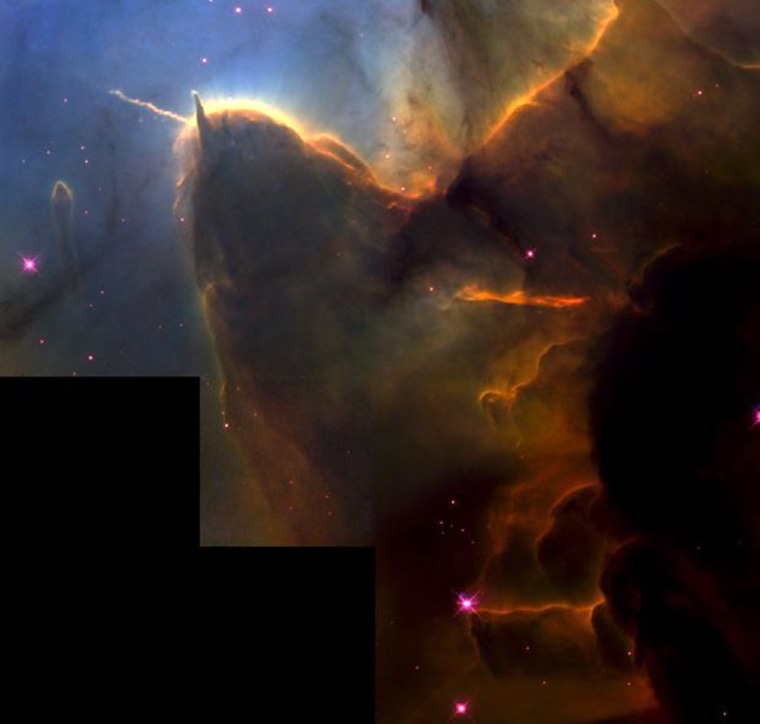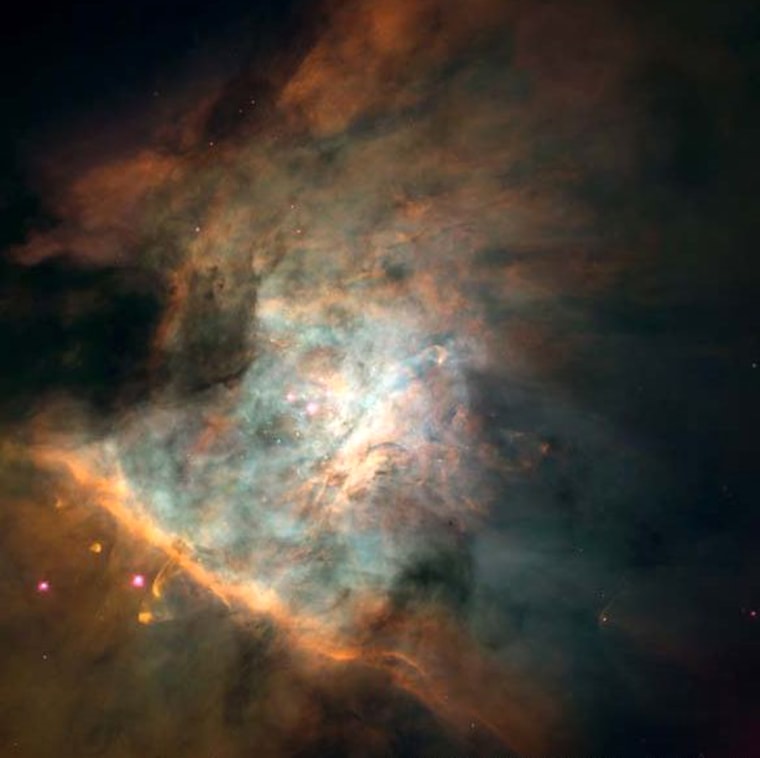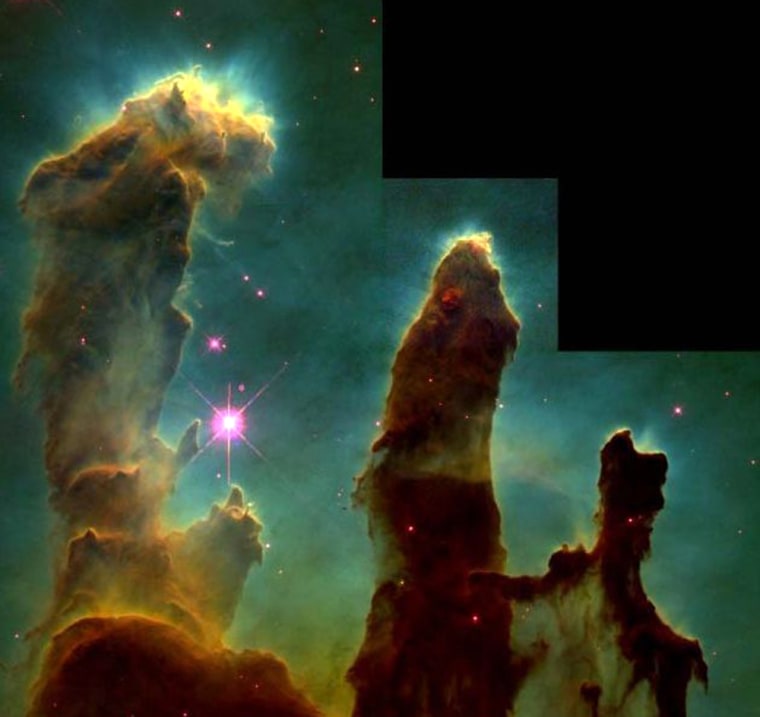A new twist on an emerging theory says the sun was born amid massive, short-lived stars that sculpted our solar system with intense radiation and violent explosions that may have affected the origin of life.
The fresh analysis pulls together several lines of evidence suggesting that the sun did not form in isolation, as astronomers once thought. Instead, it emerged from the edge of a cloud of chaos not unlike three strikingly photogenic nebulas known as Eagle, Trifid and Orion.
Eventually the crowd of stars drifted apart, and our young solar system wandered out to its rather lonely present location, more than 4 light-years from the next nearest star.
Down-to-earth evidence
Theorists have speculated since the 1970s that the sun might have formed in a dense region of starbirth. The latest evidence for a chaotic birthplace comes from meteorites that have landed on Earth after orbiting the sun for billions of years.
The rocks contain chemical patterns that can only be created by the radioactive decay of an isotope of iron called iron-60, said Arizona State University astronomer Jeff Hester, lead author of a paper explaining the idea in Friday's issue of the journal Science. The iron-60 must have been present in the early solar system but has since decayed into telltale nickel-60 in the meteorites.
"There is no way that you can form iron-60 other than in a massive, evolved star," Hester told Space.com. And that implies the sun must have been near a massive star when it formed about 4.6 billion years ago.
The iron-60 discovery was made last year by Arizona State researchers Shogo Tachibana and Gary Huss. The finding supports other evidence for the sun having formed near a massive star, said Alan Boss, a planet-formation theorist at the Carnegie Institution of Washington, "with the advantage that iron-60 can only be created in a supernova and so there is no room for debate about where it formed."
Boss, who was not involved in Hester's effort, has developed a similar scenario for the sun's formation near massive stars, using their ultraviolet radiation to explain the presence of Uranus and Neptune, which by the old, standard model of planet formation should not exist. Boss said Hester's analysis "fits in beautifully" with his work.
Hester agreed, adding that "our new work addresses how stars find their way into such environments in the first place," and provides "evidence that specifically places the sun in such an environment."
What happened
Here is what Hester and his colleagues think happened 4.6 billion years ago:
A massive star was born in a giant cloud of gas and dust. Intense ultraviolet radiation created a bubble of hot gas that pushed out into space. A shock wave in advance of the bubble compressed surrounding gas, triggering the formation of the sun and other low-mass stars.

Within about 100,000 years, the sun's remaining natal cloud was stripped away by the advancing bubble of hot gas. The whole solar system — barely under construction — was then exposed to intense UV radiation from the nearby massive star. At this point, the sun was an "evaporating gaseous globule," or EGG.
Hester first saw an EGG in a classic 1995 Hubble Space Telescope image of the Eagle Nebula, also dubbed the Pillars of Creation, taken along with colleague Paul Scowen. Later imaging of the Trifid Nebula showed this process of triggered starbirth in vivid detail.
Within 10,000 years, the EGG around the sun evaporated, leaving behind a fresh star and a somewhat flat disk of gas and dust destined to form planets, asteroids and comets. Then the nearby massive star's UV radiation began to evaporate the sun's protoplanetary disk, as it is called. In another 10,000 years, the disk was worn down to a vestige of its initial diameter. The reduced size corresponds to our current solar system.
The leftover material in the disk managed to withstand the UV onslaught. Planets were born. But there was more battering to endure.
The explosion
Massive stars don't live long. And they die explosively.
"When that happens, anything in their surroundings is going to get peppered with newly synthesized material," including iron-60, Hester explained. "Then you pick up a meteorite [on Earth] and find just the pattern of isotopic abundances that you would expect to find if the young solar system were peppered with newly synthesized material from a supernova. Once you see it, it is almost embarrassingly obvious."

Among the mysteries addressed by the new scenario is the puzzling abrupt end to the Kuiper Belt, a region of cometlike objects that extends a ways beyond Neptune.
"Ultraviolet radiation would also have played a role in the organic chemistry of the young solar system," said Laurie Leshin, a cosmochemist at Arizona State University who contributed to the analysis along with Steve Desch and Kevin Healy.
The injection of radioactive material from a supernova might even have helped create ultimately hospitable conditions on Earth, the scientists speculate. Importantly, the whole theory comes with testable predictions.
"Assuming that it holds up — and I believe it will — this is a theory that both greatly clarifies the way that most stars in the universe probably form, and also ties the properties of the solar system and Earth itself back to the conditions in the larger astrophysical environment in which we formed," Hester said.
